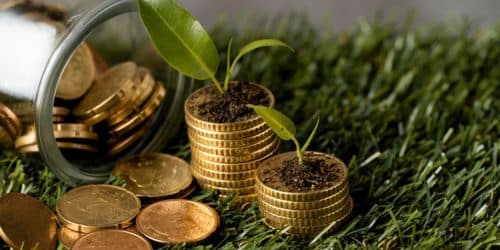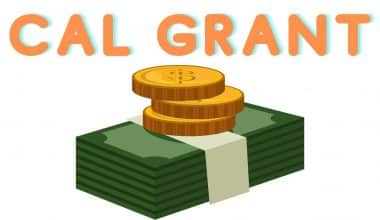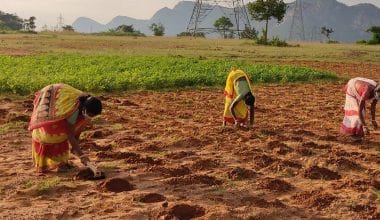Farm grants are available to female farmers who require assistance in maintaining their crops and livestock, purchasing new equipment, or constructing other infrastructure. They can also be used for conservation purposes, such as soil erosion control and river management. The USDA has a Women and Minority Farmers and Ranchers Program for female farmers. This initiative provides farmers with coaching and financial aid to help them expand their enterprises while safeguarding their properties. Here’s all you need to know about farm grants for females.
What Are Farm Grants For Females?
Grants can pay for seed, fertilizer, labor, farm-related education programs and seminars, capital expenditures in agricultural machinery or buildings, and even marketing support. These grants can assist farmers in starting new farms, expanding existing ones, or maintaining current operations.
According to statistics, female farmers are currently under-represented in the agricultural area. The USDA has noted this disparity and provides numerous farm grants to women in order to level the playing field.
Farm Grants Available For Females
Here are some of the farm grants available for females:
#1. Young Farmer Grant Program
The Young Farmer Grant Program is provided by the National Young Farmers Coalition. This grant assists young farmers who are establishing their farming professions.
The grant program gives 75 grants of $5,000 each, as well as participation in the National Young Farmers Coalition. No extra restrictions apply to recipients’ use of money to meet the costs of starting, running, and growing farm operations.
The group gives at least 50% of its grants to Black, Indigenous, and other people of color farmers, and 50% to female-identifying, non-binary, and trans farmers. However, it emphasizes that these categories are not mutually exclusive.
#2. United States Department Of Agriculture
The United States Department of Agriculture (USDA) has various grant and loan programs that can assist women farmers, but not all of them are exclusive to women. The USDA provides the following options:
Minorities and Women Farmers and Ranchers Loan.
The Farm Service Agency (FSA) makes a percentage of its Guaranteed loan funds, Direct Operating and Direct Farm Ownership loan funds, Microloan funding, and Youth loans available to underprivileged farmers and ranchers, including women. You must volunteer your ethnicity, race, and/or gender on the loan application if you want to apply for one of these loans as a Socially Disadvantaged Applicant (SDA). Loan qualification rules, quantities, and purposes differ depending on the program.
Value-Added Producer Grant
This grant program is provided to agricultural producers to help with planning and working capital for the production and marketing of value-added agricultural goods. Beginning or socially disadvantaged farmers or ranchers, small- or medium-sized farms, and other groups of applicants may be given priority. Planning grants are limited to $75,000, and working capital grants are limited to $250,000.
#3. SARE Grants
The Sustainable Agriculture Research and Education (SARE) Grant Program awards competitive grants for programs involving sustainable agriculture research and education. SARE grants, funded by the National Institute of Food and Agriculture, are available to farmers, ranchers, researchers, graduate students, extension agents, and other educators in the United States.
On-farm renewable energy, pest and weed management, no-till and conservation tillage, pollinators, and small ruminants are all eligible projects. SARE has four geographical divisions, each with its unique funding opportunities: North Central, Northeast, South, and West.
Individual grant pages provide information on available funds, eligibility and proposal requirements, and appropriate project durations. Northeast SARE, for example, provides the following award programs:
- Research and Education Grant Program
- Research for Novel Approaches in Sustainable Agriculture Grant Program
- Professional Development Grant Program
- Farmer Grant Program
- Graduate Student Research Grant Program
- Partnership Grant Program
Choose your geographic location and explore available grants to see whether you qualify for a SARE grant. Then, for each program, follow the application instructions. Each award page includes the contact information for the relevant program coordinator, whom you can contact if you have any queries.
#4. FACT Fund-a-Farmer Grant
The Food Animal Concerns Trust (FACT) offers Fund-a-Farmer Grants to assist the expansion of humane agricultural techniques and improve farm animal welfare. Since 2012, the group has given out over 600 grants totaling more than $1.11 million.
Funds can be utilized to support such aims through capital and operational work, and projects may include fencing, watering systems, access to share, cattle scratching stations, and mobile animal shelters.
To apply for a FACT Fund-a-Farmer grant, go to the FACT website’s grants section and click on “For Farmers.” The application period for 2024 begins on November 1, 2023 and ends on January 15, 2024.
#5. The FruitGuys Community Fund
The FruitGuys Community Fund (TFGCF) was established in 2012 to provide grants to small farms and agricultural charities in the United States. Grants of up to $5,000 are available, and cash can be used to improve operations.
The organization accepts project-specific applications. As well, they seek plans that will assist in building their local community and promote sustainability, such as drip irrigation, natural pest control, soil health, and energy efficiency. You must also be a non-profit agricultural organization, the owner or operator of a farm, or have legal access to the land where it is located. Before applying, the farm must have been a small- to medium-sized functioning farm for at least one year.
You can apply for TFGCF grants via the organization’s website, and the application process for the 2024 award cycle begins in January 2024.
#6. Vermont Farm Women’s Fund
The Vermont Farm Women’s Fund, available through the University of Vermont Extension, provides scholarships that grantees can use to offset the costs of enrolling for and attending educational conferences, seminars, and other classes. The funding is intended to pay for education linked to agricultural improvements that women are contemplating.
Scholarships are limited to $150, and the monies are intended to assist women who own, run, or work on farms in Vermont. You can apply online up to 10 days before the event, and you must show that you make the majority of your income in Vermont from farm-related activities.
#7. Minorities and Women Farmers And Ranchers Loan
The Women and Minority Farmers and Ranchers Program aims to provide disadvantaged farmers with equal access to farm opportunities as other farm operators. Minority and female farmers and ranchers are eligible for loans.
The program provides grants to qualified people and organizations to assist them in the purchase of land, equipment, and supplies, as well as training and technical assistance.
#9. The Beginning Farmer and Rancher Development Program (BFRDP)
This program offers grants to both men and women who want to create agricultural businesses, as well as mentoring, business planning, financial analysis, market research analysis, enterprise development, and access to finance.
#10. Farm Service Agency (FSA) Microloan Program
The FSA provides microloans designed to meet the needs of small to mid-sized farmers (both men and women) and financial assistance to small, beginning farmer/ranchers, women farmers, and veterans to help them purchase necessary equipment, livestock, and cover farming operations expenses.
#11. WAMS Grants for Women
The initiative funds research and extension efforts aimed at training, outreach, and mentoring rural women and underrepresented minorities in STEM professions. WAMS stands for Women and Minorities in Science, Technology, Engineering, and Mathematics.
#12. Amber Grant Foundation
The Amber Grant Foundation was established in 1998. It was established in memory of Amber Wigdahl, a young woman who died at the age of 19 before realizing her entrepreneurial goals. The foundation is committed to carrying on Amber’s legacy by assisting other women in achieving their business objectives.
#13. Tory Burch Foundation
This foundation offers assistance for female entrepreneurs, although it is not focused on agriculture. The foundation’s mission is to encourage women’s empowerment and entrepreneurship by providing resources and initiatives that support the success and long-term viability of women-owned small enterprises.
#14. Risk Management Education Farm Grants for Women
Farm grants for women are a significant risk management option. These grants provide critical resources to female farmers, assisting them in increasing yields and improving their operations. The grant monies can be used to fund new technology investments, the growth of current investments, or premium payments on crop insurance premiums.
What is the USDA Minority Farmer Compensation Program?
This program implements Section 22007 of the Inflation Reduction Act, which provides financial aid to farmers, ranchers, and forest landowners who were discriminated against in USDA farm loan programs prior to January 20, 2021. This program received $2.2 billion in funding from Congress.
What Is A SARE Grant?
SARE grants are only intended for programs involving research and education, not to cover the costs of beginning a farm. Through a range of programs and services, the USDA’s Beginning Farmer and Rancher Coordinators can assist you in starting or expanding your farming operation.
What is Grant Income?
Grant income is revenue that you (or your firm) receives without having to do anything in return. There may be a requirement to report on your actions, and you may only be authorized to spend the grant on specified expenses, but this does not preclude the revenue from being grant income.
What Is A Grant Reimbursement?
A reimbursable grant is one in which you only receive funds after you have incurred the costs of your program. This means that you pay for the project up front, and then the grantor reimburses you for the money you’ve already spent.
Who Receives The Most Farm Subsidies?
Large and rich farms are the top receivers since that is how agricultural subsidy programs are constructed – payments are provided based on acreage or productivity, thus farms with the greatest acres or crops produced receive the largest payments.
How do Farmers Get Money?
The majority of farms are small, but larger farms produce the majority of the food. Gross cash farm income (GCFI) includes cash receipts from commodities, farm-related income, and government payments.
What is the Most Popular Grant?
Program support grants are the most common type of award. Grants for specific projects or programs are provided by program grants. In general, these are restricted grants, which require beneficiaries to spend funds exclusively for the reason specified in the grant proposal.
What is an R33 Grant?
The R33 mechanism is intended to promote more developmental research projects and should be predicated on the formation of proof-of-principle from preceding research. An IMAT R33 project may or may not have previously received exploratory IMAT R21 or R61 funding.
Do Grants Affect Your Tax Return?
Grants are typically granted by federal and state governments and are normally not taxable if used to pay authorized expenditures while pursuing a degree at an accredited educational institution.
Can You Pay Yourself With Grant Money?
This is entirely dependent on the grantor’s rules for grant use, although it is conceivable if those terms permit it.
Why Do Farmers Get So Much Money?
The government supports almost every aspect of farming. It shields farmers from price and revenue swings and subsidizes their insurance, land improvements, financing, marketing, research, and export sales.
Farm Grants For Females: Conclusion
Women farmers may create profitable farms and make use of the same chances as other farm operators thanks to these programs. Thanks to USDA’s commitment to providing access to all Americans, more female farmers will start flourishing.
- What is Commercial Farming? All You Need To Know 2023
- HOW TO MAKE MONEY FAST AS A WOMAN in 2023 (Detailed Guide)
- How To Apply For A Small Business Grant
- STARTING A BUSINESS IN TEXAS: Checklist, Costs, and Requirements






